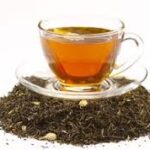How Technology is Reshaping the Tea Industry– The Tea industry is more than 200 years old. With time, technological advancement kept no pace. However, technology has developed during the last 5 years so, it has now the ability to solve issues of the tea industry. In India, the production of tea is around 1.2 billion kilograms, and generating this ample volume of tea is not possible without smart farming. Moreover, in this blog, we will talk about How Technology is Reshaping the Tea Industry.
Hence, the multifaceted tea industry needs more than smart farming. The tea industry needs tech-enabled smartness in all aspects of its functioning. In addition, technology plays a major part in the way tea is produced, marketed, or consumed by the end user. Moreover, technology plays an important part in getting rid of the humongous waste the industry generates post-production and making environment-friendly products from scrap.
Testing and tracing can point out the authenticity and timing of plucking the tea leaves. Now, technology has facilitated this in the minutest detail.

Factors Determining Tea Quality
- The quality of tea is determined by the chemical composition of the tea leaves.
- Tea leaves should contain maximum caffeine context, coaster leaves and stem are lower in caffeine context and maximum caffeine context is found in newly formed leaves and buds.
- Lower-down leaves and stems are poor sources of caffeine and polyphenols, buds and first leaves are proportionally richest in these constituents.
- Leaves and buds obtained by fine plucking are the best material because of the high contents of polyphenols and caffeine.
Technology in the ‘T’
Technology has been a single game changer for the tea industry. To keep a tab on new technologies, and bringing digitalization is the need of the industry. We are digitizing tea farming using technology to integrate financial and field-level records. Smart tea farming improves quality, and production efficiency, and decreases the cost of production and adverse effects on the environment.
It is suggested that smart tech, including cameras and drones in tea plantations for spraying and irrigation, moisture sensors, and soil testing data, can be used to pinpoint requirements and digital maps. Additionally, there are three broad areas we need to cover with technology or digitalization in the tea industry for spraying, weeding, and fertilizers, the second step is to ensure factory operations, and the third and main area is to establish a connection with the market.
Moreover, tea plucking is an area where technology can be used better. Moreover, At the factory levels, there are two main areas where tea technology can be used, withering and fermentation. Until now, humans used to smell and feel the tea leaves while plucking. We can use machine vision along with sensors and actuators to optimize the right level of wither. And it can be done the same with fermentation.
Improvement of quality is a major issue. Hence, It depends on the quality of the raw material and it can be done with focused plucking. The industry needs to strengthen its training platforms to adopt learning new machines or automation for its operations.
A universal set of standards for maximum residue level (MRL) compliance, fewer chemical loads on tea bushes, pest control, sustainability, certifications, and better policies to boost export can help to reach quality tea in every corner of the world.
Tea Vending Machines
There is no doubt that instant tea is the top choice for workaholics due to their busy lifestyles. With the help of smart vending machines, beverages can be dispensed in a contactless and hygienic manner. Vending machines come in all shapes and sizes, the miniature version of the modern-day machine can fit in every space such as homes, hospitals, offices, railways, and other public places.
Blockchain Technology
It is a new age technology, simply it means the documentation of every step from tea production to its consumption. Here, is what it means:
Enhances traceability: with this technology, it becomes easy to trace the tea product journey from the farm to the consumer.
Ensures quality control: with this, it is possible to record the temperature, humidity, and other environmental conditions during tea production and transportation.
Directly to the consumer: tea producers can sell their products directly to consumers by reducing intermediaries costs.
Support sustainability: blockchains are used to trace the sustainability of tea production including the use of pesticides and other chemicals, water usage, and waste management.
CNNs
Deep convolutional neural networks (CNNs) help to detect diseased plants and the best time for fermentation with high accuracy. Additionally, It helps to select the best leaves that are disease-free, additionally monitoring tea fermentations in real time has become easier. Tea plants do come with their fair share of diseases. Therefore, it is important to nip the disease in the bud before it affects the quality of tea.
Conclusion: the integration of data, machine learning, and automation is transforming the way tea is grown, processed, and distributed. This blog will delve into how these technologies are reshaping the tea industry.
FREQUENTLY ASKED QUESTIONS (FAQS) about how technology reshapes the tea industry.
1) How does innovation provide profit to the tea industry?
The tea industry can generate maximum profits by focusing on plucking techniques. Fast adoption of technology, and enhancing the quality of tea.
2) How does technology help in the tea manufacturing process?
In the tea industry, technology usually functions through establishing models, detection, and prediction of tea quality.
3) What natural and economic challenges are faced by the tea industry?
The tea sector faces challenges such as climate impacts, rising production costs, pest and pesticide use, low prices of tea, less human labor, and many more.
4) How can we improve tea quality?
Adding a proper portion of manure, and covering the ground with crops and mulch can lead to better-quality of tea production.





